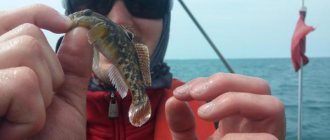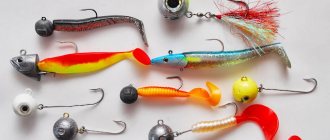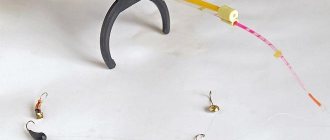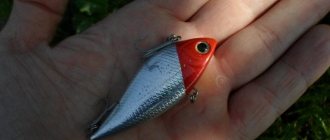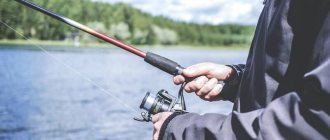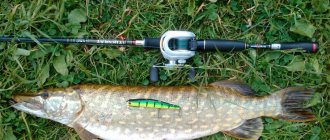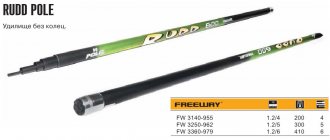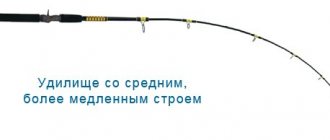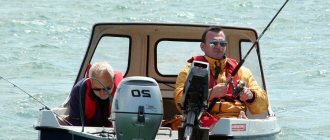Not only local fishermen, but also vacationers who come to the Sea of Azov are not against catching a bull.
Such fishing is remembered for a long time, as it leaves behind many interesting memories, especially since fishing is always productive. Some holidaymakers manage not only to go fishing during their vacation, but also to stock up on dried bull fish. Not only is dried goby delicious, but also fried. If someone has managed to taste dried or fried bull at least once in his life, he will remember this taste for the rest of his life and will have the desire to try it again for the rest of his life. Catching this tasty fish is not difficult, especially if you have a boat, and even the most inexperienced fisherman or novice fisherman can cope with this task.
Goby's favorite places
This is a coastal zone with large scatterings of stones and thickets of grass. Here, under stones or in thickets of grass, he hides. The goby does not move over large areas, but lives in certain places, trying not to leave them.
The goby has a good appetite and feeds on almost everything that swims or crawls in the Sea of Azov, unless, of course, it can handle it. For the winter, it leaves its favorite places and moves to the depths.
From March to August, the goby spawns. The condition for the start of spawning is the water temperature not lower than +12 degrees. For spawning, the male finds a suitable place and builds a nest. After this, he “invites” several females to his nest, who lay eggs there. Subsequently, the male guards the laid eggs and, if necessary, ventilates the space around them, supplying the eggs with fresh water. This happens until the goby fry hatch from the eggs.
When to catch a bull
Goby fishing continues all year round, both in summer and winter, but in winter the goby moves deeper into the sea, where the water temperature is quite stable. After winter, the goby again comes closer to the shore and already in March it can be caught in the coastal zone.
The best stage for catching bullheads is autumn. In the fall, the goby feeds with particular activity, preparing for winter, which is why fishermen’s catches at this time of year are much larger. The best time to catch bullheads is morning. It’s best to start catching a bull just before dawn, and when it starts to get light the bites of the bull will be very frequent and incredibly greedy. During the day, the goby's bite noticeably weakens and the goby's activity returns in the evening.
Read: Fishing with a jig in summer
Appropriately speaking, goby fishing is quite successful at night, so if you can’t sleep, you can easily take your gear and go fishing for goby at night. Fishing for goby in the sea in the coastal zone lasts from April to November, after which the goby goes to a depth further out to sea.
Fishing places
The choice of place for catching goby in the Sea of Azov depends on weather conditions: in cloudy weather it can be caught on shallows located close to the shore, and in sunny weather or during rough seas, it is more caught in deeper places. It should be said right away that going out to sea during strong waves or a storm warning is very dangerous.
The location of the goby can be detected by the concentration of boats of fishermen who know its favorite places. Such places remain its permanent habitat for many years, which, of course, local fishermen know.
Main varieties
Today there are 20 varieties. The great diversity is due to its distribution throughout the world. Most of the species live in temperate regions. Let's look at the most common types.
Round goby
A typical representative of the goby family. General characteristics:
- length is 15–25 centimeters;
- large caudal fin;
- there is a dark spot on the body;
- can live in very salty water;
- weight is 100–200 grams;
- There are high fins on the back;
- huge numbers;
- not picky about food (worms, fry, etc.);
- spawn in spring;
- lives at a depth of 2–10 meters;
- the body is oval in shape;
- massive head darker than the body;
- leads a gregarious lifestyle.
Fish can be used to prepare delicious dishes. Large numbers are observed in the Black and Azov Seas.
Goby
It lives primarily in salt water. Bubyr belongs to the euryhaline species. General characteristics:
- light gray coloring;
- elongated body;
- there are small dark spots on the sides;
- large eyes;
- bottom lifestyle;
- flat snout;
- elongated caudal peduncle;
- the teeth are shaped like cones;
- spawn in the spring (portioned spawning);
- length varies from 12 to 25 centimeters;
- the dorsal fin has 6 rays;
- big head;
- the entire body is covered with special ctenoid scales;
- dark stripe on the back;
- no swim bladder;
- prefers clean water;
- coloring depends on condition;
- upturned jaw;
- the mouth is always open;
- many red spots;
- weight varies from 20 to 300 grams;
- There is a longitudinal pattern on the back.
Bubyr habitats:
- estuaries;
- lagoons;
- sandy bottom;
- bays.
Distributed in the Marmara, Azov and Aegean Seas.
Goby-tsutsik
This variety is popularly called blunt-nosed and marbled.
Tsutsik lives near the seashore. Favorite places are coastal sea areas and small bays. In addition, Tsutsik is actively developing rivers.
The main source of nutrition for the tsutsik are various invertebrates. For example, worms, various larvae.
Habitats:
- Aegean Sea;
- Volga river;
- Sea of Azov;
- various coastal lakes;
- Caspian Sea basin, etc.
General characteristics:
- yellowish-gray coloring;
- bottom lifestyle;
- sedentary lifestyle;
- life expectancy is 2–3 years;
- length is 5–12 centimeters;
- no swim bladder;
- spawn in the summer (portioned spawning).
bighead goby
This is a little-studied species.
- the body has an elongated shape;
- the anterior part of the body is thickened;
- there are two dark spots on the head;
- grayish-brown coloring;
- there are five transverse stripes on the back;
- prefers rocky soils;
- massive lower jaw;
- there is a dark spot on the tail;
- massive flattened head;
- length is 15–22 centimeters;
- the head is covered with special cycloid scales;
- varied diet (molluscs, fry, various larvae);
Habitats:
- Black Sea;
- various estuaries;
- Caspian Sea.
Sculpin Goby
A very common and original fish. The sculpin lives in small rivers and tributaries.
- massive mouth;
- all fins are covered with small spots and stripes;
- takes refuge under the poplars;
- sedentary lifestyle;
- developed pectoral fins;
- spawn in spring;
- length varies from 6 to 12 centimeters;
- coloring directly depends on the location;
- shortened body;
- wide head;
- big eyes.
Rotan goby
Mainly lives in freshwater reservoirs and rivers. Rotan is popularly called rooster and greenfly.
- length is 12–25 centimeters;
- sedentary lifestyle;
- large head and eyes;
- excellent survival rate;
- adapts to new conditions in the shortest possible time;
- high gluttony and fertility;
- weight varies from 200 to 300 grams.
It also happens: The method of catching marinka
is widespread in rivers, lakes, streams, ponds, creeks and swamps.
Grass goby
A typical representative of the goby genus. Lives mainly in salt water. Spawns in spring (April, May).
- small dark spots on the sides;
- brownish-greenish coloring;
- elongated body;
- length is 17–25 centimeters;
- the whole body is covered with special scales.
Sandpiper Goby
This is a very voracious fish. It feeds on caviar, mollusks, worms and so on. The sandpiper can be found in large rivers and seas.
- a long tail;
- yellow-gray coloring;
- omnivorous;
- loves warm water;
- prefers the middle current;
- powerful, longitudinal body;
- there are small dark spots on the fins;
- massive mouth;
- quite large head.
Goby
An incredibly hardy fish that lives in sea basins and estuaries. The gorlach is a predator.
- leads a gregarious lifestyle;
- the whole body is covered with dense scales;
- large, streamlined body;
- migrates in summer;
- big head;
- there are dark stripes on the head;
- the length of an adult is 15–20 centimeters;
- survives in extreme conditions.
March goby
Martovik is a predatory fish that feeds on fry, mollusks and worms. Martovik can be found in the Caspian and Black Seas.
- thickened head;
- the weight of an adult varies from 350 to 500 grams;
- grayish-brown coloring;
- rounded pectoral fins;
- on the back there are two dorsal fins;
- some parts of the body are not covered with scales;
- big mouth;
- life expectancy is 6–7 years;
- length is 25–30 centimeters.
Tackle for catching goby on the sea or river can be very diverse. Most often, experienced fishermen use float, bottom varieties, as well as casting or spinning rods.
Specialized stores offer a wide selection of gear for bulls. For this type of fishing, a fishing rod with the simplest design is quite suitable. Its weight should be light. It is better to give preference to comfortable fishing rods. Experienced fishermen can create their own gear for catching gobies.
When choosing a fishing rod, you need to take into account the time and place of fishing. For each type of blank, it is recommended to use a fishing line with a certain cross-sectional size, as well as special hooks. The entire system should provide comfortable fishing. Subsequently, it will be possible to make gear yourself. In this case, it will be possible to take into account a number of the angler’s requirements, the peculiarities of his style of fishing out of water.
Tackle
Goby hunters use a bottom fishing rod, the so-called zakidushka, which consists of a fishing line with a diameter of 0.3-0.5 mm and a length of about 15 meters. A number 8-10 hook is attached to the end of the main line. After a distance of 20-25 cm, a load is attached, and after another 20-25 cm, a leash with a second hook. The length of the leash is also 20-25cm.
The weight of the load is selected experimentally: a small load will not work, since the bait will slowly sink to the bottom, but too large is not needed. As a rule, this is a 2x3cm lead plate twisted into a tube.
Very rarely, fishermen use a float rod or spinning rod to catch goby, due to the inconvenience of using them. They are not justified, they make the gear heavier and make fishing slower, and therefore less interesting.
Bait
The goby is very voracious and will not be able to refuse any bait if it is from its diet. Animal or fish meat is suitable for this. According to fishermen, its own meat is considered the best bait. He is also not averse to eating beef. One way or another, in order for the meat to turn into bait, it is cut into centimeter cubes and put on hooks. The bait must be placed so that when bitten, the sting is immediately outside the bait. In the Sea of Azov, the water is salty, and therefore any meat quickly gets wet and loses its attractiveness. Therefore, if there are no bites for a long time, then the bait should be replaced.
You can use a regular worm or shrimp as bait, but if they fall on a rocky bottom, they quickly fail. The fact is that at the bottom of the sea there can be a current that drags the bait along the bottom. As a result of this, the worm or shrimp is simply pulled off the hook by the current.
Fishing from a boat
Fishing can only be effective if the fisherman has a boat in his arsenal, otherwise it will not be possible to catch a good bull in sufficient quantity. In order to secure the boat in one place, fishermen use “cats” made of hardened wire. This is done so that if the “cat” gets caught on a stone, it does not remain on the bottom. With great effort, the “cat” unbends and can always be pulled out of the water. To reliably hold the boat in one place, two of these “cats” are enough.
If there is no bite, the boat can be moved to another area in a short time and quickly anchored.
Fishing technique
The technique for catching a bull is as follows. The baited tackle is thrown as far as possible from the boat, or to where the last bite was. As a rule, casts are made either to the left or to the right of the boat. If cast to the right, the line is held above the water using the index finger of the right hand, and the bait is slowly pulled along the bottom with the left hand. In this case, you need to ensure that the fishing line is always taut. As soon as you feel the moment of a bite (twitching), the line should be released. It is at this moment that he takes the bait thoroughly. You should immediately make a sharp hook, after which the bull is pulled out of the water.
Thus, two bulls are caught at once. You can’t delay hooking and you shouldn’t wait for the second goby to bite, since a goby caught on the hook can lead the tackle behind rocks or into a hole and getting it out of there will be very difficult, and sometimes impossible.
Another situation may happen when the tackle gets caught, but there has not been a bite yet. Then it makes sense to leave the tackle in this position until the bite occurs. After the goby swallows the bait, it can release the tackle from the hook.
Using a boat, you can immediately catch several baits at once, scattering them around the boat in a fan. In the event of an intense bite, all that remains is to pull out the gear to check. Usually in such cases, when you check the hook, the bulls are already sitting on the hooks, and perhaps only on one hook.
Features of catching a bull in summer
Summer is the most successful season for fishing gobies. During this period, they gather in large flocks, joining their relatives. Their habitats include cracks in breakwaters, car tires, and rock embankments. These objects provide shelter for the fish. However, the goby avoids garbage found in the depths of the sea, since this individual loves order. There are no stones, no algae, no shells or other debris near its shelter.
In summer, the goby bites very actively. The fish practically snatch food from each other, grabbing any bait moving along the bottom. It has been noticed that at the beginning of summer there are more bites if the bait moves closer to the surface of the reservoir, and if it makes gentle movements and oscillations, the gobies will not take long to bite.
